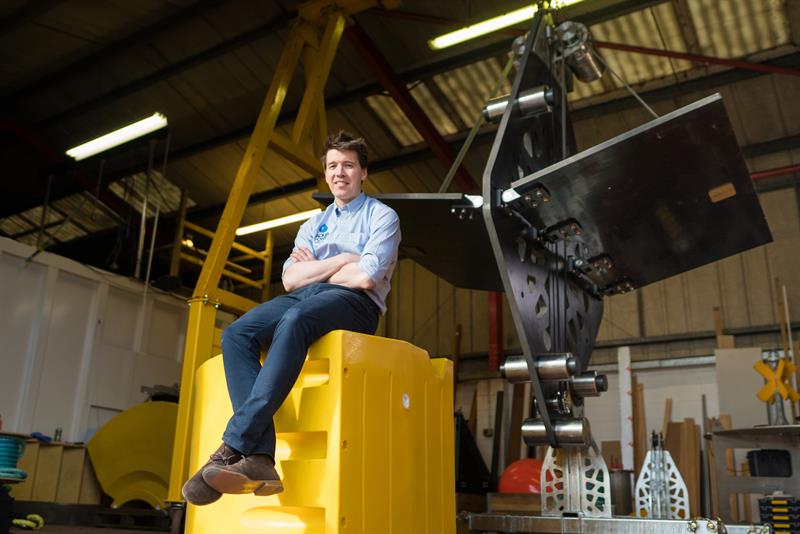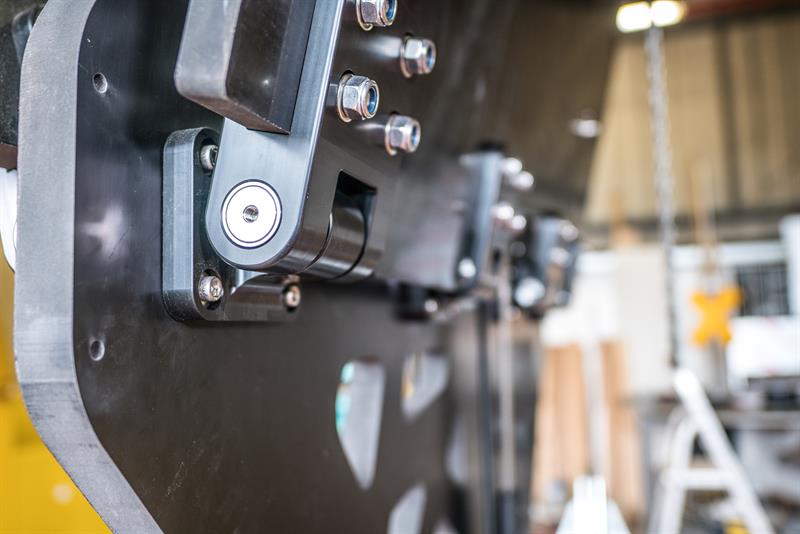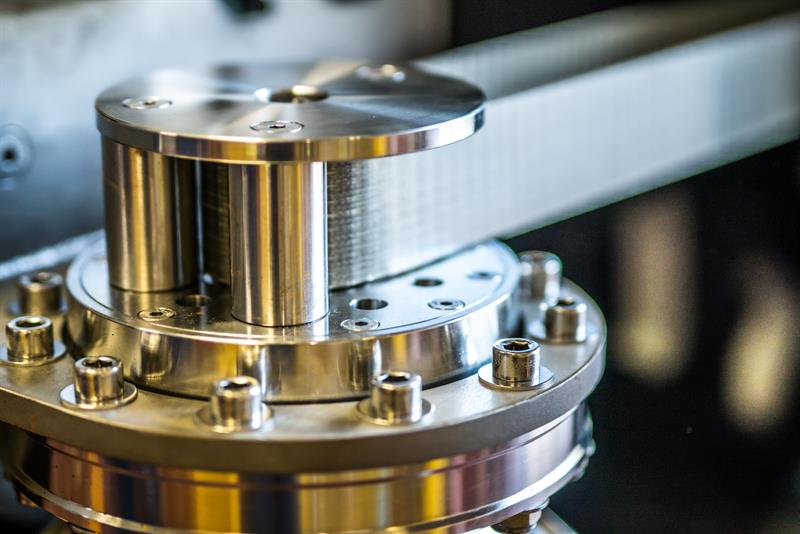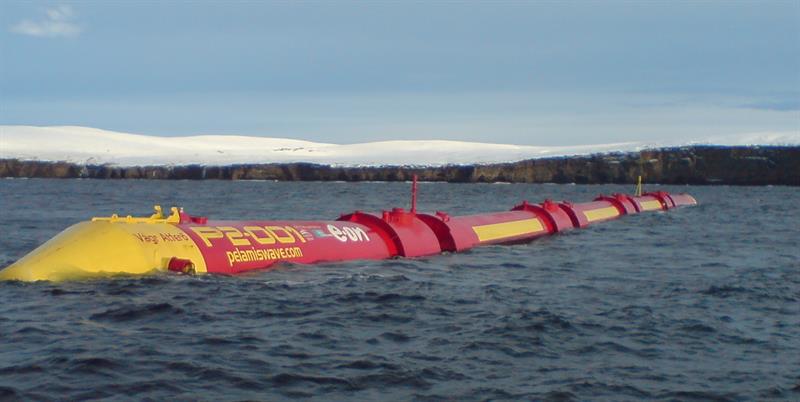When it comes to renewable energy, it is fair to say that wave energy has been the Cinderella of the sector. While wind energy has gone from strength to strength and become a commonplace feature of our land- and seascapes and solar panels are widely seen, tidal energy has not really achieved its promise.
This is not from want of trying. Some high-profile tidal energy projects have come and gone. Perhaps most notable in this country was the Pelamis project, which gained a great deal of attention (including coverage in Eureka!). This was made up of connected sections which flex and bend as waves pass to generate electricity. Sadly, however, Pelamis Wave Power (the company that owned Pelamis) went into administration in November 2014.
However, the potential for renewable wave energy is such that the technology is not going to disappear. In a country such at the UK in particular, with its long coastline, the potential is too great to ignore. The UK government estimates that wave and tidal power could deliver 20% of the UK’s electricity needs.
 One project that has sought to learn from the mistakes of its predecessors is MANTA from Aqua Power Technologies. The brainchild of design engineer Sam Etherington, one MANTA unit alone is claimed to have the potential to power as many as five homes.
One project that has sought to learn from the mistakes of its predecessors is MANTA from Aqua Power Technologies. The brainchild of design engineer Sam Etherington, one MANTA unit alone is claimed to have the potential to power as many as five homes.
A native of the Lake District, where his family runs an engineering business, Etherington investigated wave energy in his final year at Brunel University. “I looked at wave power for my thesis and designed something I thought was alright – based on ignorance, really,” he jokes.
Following graduation, Etherington submitted his design to the James Dyson Award, where it won the UK leg and went on to be shortlisted in the top 20 international designs. The design then went on to be inducted into skills body Semta’s Engineering Hall of Fame celebrating the best of British engineering.
The publicity surrounding these successes led to grant bodies approaching Etherington with a view to funding his development. Unwilling to look a gift horse in the mouth, he accepted a few grants and started to look at the feasibility of the project.
 Not everything went smoothly, however. “After a few months and a lot of headscratching,” he says, “I couldn’t come up with a realistic way that I was going to make this device viable with the finance and skill sets I had available. This was at the same time that Pelamis went under – about two months after I started the grant-funded feasibility project. I realised I was on a very similar pathway to those guys and they were 10 years further down the line.”
Not everything went smoothly, however. “After a few months and a lot of headscratching,” he says, “I couldn’t come up with a realistic way that I was going to make this device viable with the finance and skill sets I had available. This was at the same time that Pelamis went under – about two months after I started the grant-funded feasibility project. I realised I was on a very similar pathway to those guys and they were 10 years further down the line.”
This led to a re-think and the decision to scale down from the original design. He says: “I think it was the idea that, if you’re designing something, start small and scale it up. By contrast, I was going straight for the big project, so that was a bit of a realisation that I wasn’t following the fundamental design practices I’d been taught. So I moved back into smaller devices. The idea being that you could put 10 smaller devices out to achieve the same power output as one large device.”
Going back to the drawing board, Etherington came up with six designs that were fully engineered, fully costed and simulated. Each involved around five months’ work, but there were problems with all of them. Either they could not be cost-engineered successfully or the principles were slightly flawed. Says Etherington: “I went through six versions of different machines and you just have to be prepared to drop them and start again.”
The breakthrough came in the development of a ‘heave plate’. This Etherington describes as “like having a dish in a sink full of water”. He explains: “If you pull out the plate quickly, there’s resistance. So I designed this heave plate that was automatically load-shedding, in a 3m wave with a six-second swell, a 4m diameter heave plate would work brilliantly. But, if it’s 10m with a 15-second swell, that same heave plate is generating huge amounts of drag. It’s a fixed plate, there’s nothing you can do about it. Obviously, in wave energy, it can be very calm one day and ridiculously stormy the next, so you need something that can cope with both of those situations.”
The idea of this heave plate was that it was automatically able to shed load that was beyond its pre-set limit. Essentially it had a series of flaps that would open up all on their own at a certain load. Etherington realised that if you flipped the flaps around, you have a large surface area, which is proven in tank testing to be sensitive to any slight movement in the water.
“The heave plates essentially want to remain still because there are such massive surfaces acting against the water. So the idea was to flip it on its head and put the flaps on the outside. That way you end up with a large surface area that’s very sensitive,” says Etherington.
 Another key area of innovation involved the development of power take-off for the system – i.e. how do you actually get the power out? Essentially, Etherington says, there are two options: you either go for a hydraulic system like Pelamis or you go for a gearbox. “Hydraulics do actually make a lot of sense,” he says, “because you’ve got varying strokes of movement that are not consistent from wave to wave. But a hydraulic system has the potential to absorb all of those and later convert them.”
Another key area of innovation involved the development of power take-off for the system – i.e. how do you actually get the power out? Essentially, Etherington says, there are two options: you either go for a hydraulic system like Pelamis or you go for a gearbox. “Hydraulics do actually make a lot of sense,” he says, “because you’ve got varying strokes of movement that are not consistent from wave to wave. But a hydraulic system has the potential to absorb all of those and later convert them.”
However, neither solution “ticked the boxes” for Etherington. “And just from the work I’d been doing, I could see that neither of these were right for me because they’re not simple and they’re prone to failure. For instance, just one hose or valve in a hydraulic system has to fail and the whole system is down – it doesn’t work properly. Equally, a gearbox in a wave environment is just a really bad idea. It’ll just shred it.”
Instead, he opted for an alternative solution using a timing belt attached to the device’s wings. Attached to any floating object by a chain, MANTA is submerged 10-20m underwater, operating in a calmer part of the water column. Its large ‘wings’ are hydrodynamically forced up and down by the motion of the sea, creating a very sensitive system, even in small waves. The wings actuate the generator, which converts the wings’ reciprocating motion into power. This is achieved by the use of a timing belt attached to the wings and a generator atop the system. This has the twin advantages of being an external component (and therefore easy to access) and being able to ramp up speed without using a hydraulic system or a gearbox.
With these innovations, MANTA was born. The system is now on version 20. Crucial to its development has been the importance of robustness and design simplicity. “The flaps are flapping up and down, the timing belts are running back and forth over a pulley sat on a custom-made generator designed in-house,” says Etherington. “This is a direct drive. If you turn the shaft, power is coming out of the back end – there are no other systems in there. No oil, no hydraulics, no gearbox and – importantly – there’s no shaft seal, it’s a totally hermetically-sealed power generating pod. At some point you need to extract the power, but the system itself is actually pretty agricultural. Stuff in the sea is going to break, so acknowledge that and make it easy to replace what’s going to wear out.”
All the crucial and sensitive parts are contained within that pod. These include the direct drive generator and a series of circuit boards monitoring the absolute position of the shaft so that the exact position of the flap is known. Knowing where the flap is allows the operators to know exactly how much they can load MANTA.
The frame of the system is also robust, being made of a single piece of high-density polyethylene that’s 40mm thick to which the flaps are attached. The flaps are also made of high-density polyethylene, which is proven to last in the water for 20-30 years. “It’s a difficult material, but for my use it’s perfect,” says Etherington.
Keeping the cost of the system manageable has been of paramount importance in Etherington’s design. “Ours is a low-cost system,” he says. “Other people in the wave industry claim they’re low-cost, but they’re still half a million quid. When we say low-cost, we mean that the commercial device will be no more than £35,000 for a complete system.”
This aim for low costs involved a number or realisations, claims Etherington. “One was ‘Don’t build a hull’. When you build a hull, you’re in shipbuilding territory, which is what happened to Pelamis. It’s really hard to pin down the labour cost, which has a massive impact on your overall costs when you scale up.”
Another concern was not to over-engineer the design. “If it’s a 3m wave today and a 10m wave tomorrow and you’re trying to design a device that can cope with that huge variation, there are two approaches,” claims Etherington. “One is to completely over-engineer the device, which means that 90% of the time it’s so over-specced that the whole thing is too expensive. Another is to introduce stopping systems, which are likely to fail as the systems that drive them fail.”
 Since its initial design, MANTA has undergone extensive tank testing. This has involved the purchase of a test tank, since the commercially-available facilities were too expensive and only operated 9 to 5, meaning they did not fit in with the overall design process. Since the tank was purchased, there have been 1,023 different variations of MANTA and roughly 24 tests, meaning “you very quickly start to understand how it works - what it likes and doesn’t like”, says Etherington.
Since its initial design, MANTA has undergone extensive tank testing. This has involved the purchase of a test tank, since the commercially-available facilities were too expensive and only operated 9 to 5, meaning they did not fit in with the overall design process. Since the tank was purchased, there have been 1,023 different variations of MANTA and roughly 24 tests, meaning “you very quickly start to understand how it works - what it likes and doesn’t like”, says Etherington.
The system wasthen scaled it up and sea tested in the Farne Islands. It was then scaled up again, underwent more testing there and was then scaled up again to the size it is now. This machine is now being trialled off the West Coast of Shetland in a salmon farm.
Says Etherington: “That’s going out there for about a year and the guys who are running the farm have taken exclusivity on the device for the aquaculture industry for Norway and Scotland. They want to offset their diesel consumption. They’ve got fishfarms all over the UK and Norway and use diesel to power all the systems offshore because it’s uneconomical to lay a cable. Transporting diesel to a shore base and transport it to the farm. By the time it gets there, you’re at significant price, so it’s a great opportunity for MANTA to be competitive versus what they’re paying at the moment.”
The idea is that MANTA charges battery banks on board the barge which, at night, will switch to battery power for the computers, lights, seal scarers, etc. This would normally involve the generator being on tick-over using 6 litres of diesel per hour. The aimed-for payback time is three to four years.
Following completion of the current tests and a realisation of its commercial potential, Etherington sees considerable value for the system in other areas. He says: “One of the other industries I’m quite keen to make happen is for remote islands and coastal communities where they now use diesel generators.”











